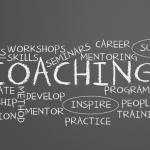Not everyone is a born actor, but make no mistake: selling involves a degree of performance where a customer is shown the possibilities of a better future. And to do that well, you’re going to have to practice.
Particularly when reps are new or walking into a major account for the first time, sales managers will want to take some time to go over not only what they’re preparing to say, but how they’re preparing to say it. Although a lot of sales coaching happens after something has already gone wrong, the best coaches work proactively to make sure their team feels confident and clear about the impression they’re about to make with a customer or prospect.
Some reps might find the idea of practicing or role-playing uncomfortable or even demeaning. That’s why a part of the sales manager’s role is not only providing good advice on their pitch, but creating an environment where the team member feels comfortable acting much like they would in a live, face-to-face encounter.
Use whichever of these tips make the most sense in your practice sessions:
- Start in a non-traditional environment: We tend to be more comfortable in coffee shops, or even sitting on a sofa rather than a swivel chair, than we do in a traditional boardroom. Take the practice session outside or somewhere far different from what the actual client setting might look like so the rep can loosen up.
- Introduce a creative constraint: Lots of things can happen at the last minute when you’re pitching a customer. There might be suddenly be more people added to a meeting at the last minute, for example, or the time for the meeting might be cut in half. Throw these kind of curve balls into your practice session so the rep has plenty of backup ideas to roll with them.
- Try without slides: Presentations are a standard part of the salesperson’s toolkit, but it’s human nature to become dependent on speaking directly to bullet points. Encourage the rep to think through what might happen if the presentation didn’t load, or the client wanted to veer off from what’s in the prepared slides.
- Compete for attention: The only thing tougher than really difficult questions from a customer or prospect is lack of real interest and engagement. Help the rep think through ways to grab their attention by checking your smartphone, doodling on a page or otherwise failing to watch what they’re saying.
- How slow can you go? One of the most common presentation glitches is people moving too quickly or talking too fast. Use your watch to look at how fast (or in some cases, how slow) the rep is going and encourage them to pause briefly after each main point. Map out the time allotted for the meeting and how much you might need for Q&A. For a new client, it might be more than for someone more familiar with your firm’s products and services.
- Switch roles: After running through it once or twice, let the rep play the customer and think through any major questions or objections about what’s being proposed. What can they critique about the sales manager’s delivery that they can then apply to their own approach?
- Sell something else: Pick an object in the room – a chair, a table or even a pen – and ask the rep to think about how they would go about selling it to the same client they’re preparing to meet. When you can’t fall back on the specs and pricing of the products you’ve been studying, what you’re left with is largely your personal powers of persuasion, and that’s one of the things you want the practice session to bring out.
- Sell someone else: A lot of purchasing in B2B happens in teams. Think one step ahead and imagine that the first meeting is already over and the decision has moved one rung up the ladder to a director, CFO or even CEO. What questions might they have and how can you help ensure they’re answered long before you ever reach that step in real life?
- Conduct a ‘smile’ count: Selling can be stressful, especially if you’re new at it, but customers and prospects are more comfortable when they sense whoever’s making the pitch is comfortable too. Watch for how often the rep smiles, makes eye contact and uses their body language, and gently relay back what they might consider changing.
- Put a number to it: You can always end with a “how do you think that went?” to the rep, but try set some kind of measure. When the practice session is over, for example, rate the rep’s performance from one to five, with five being “outstanding.” Ask the rep to do the same. Share your results with each other and compare notes. Keep practicing until both of your “fives” are aligned.
Practice in selling may not make perfect, but it will certainly make selling a lot better.
Want more tips to increase your sales performance? Check out Salesforce’s free eBook:


























